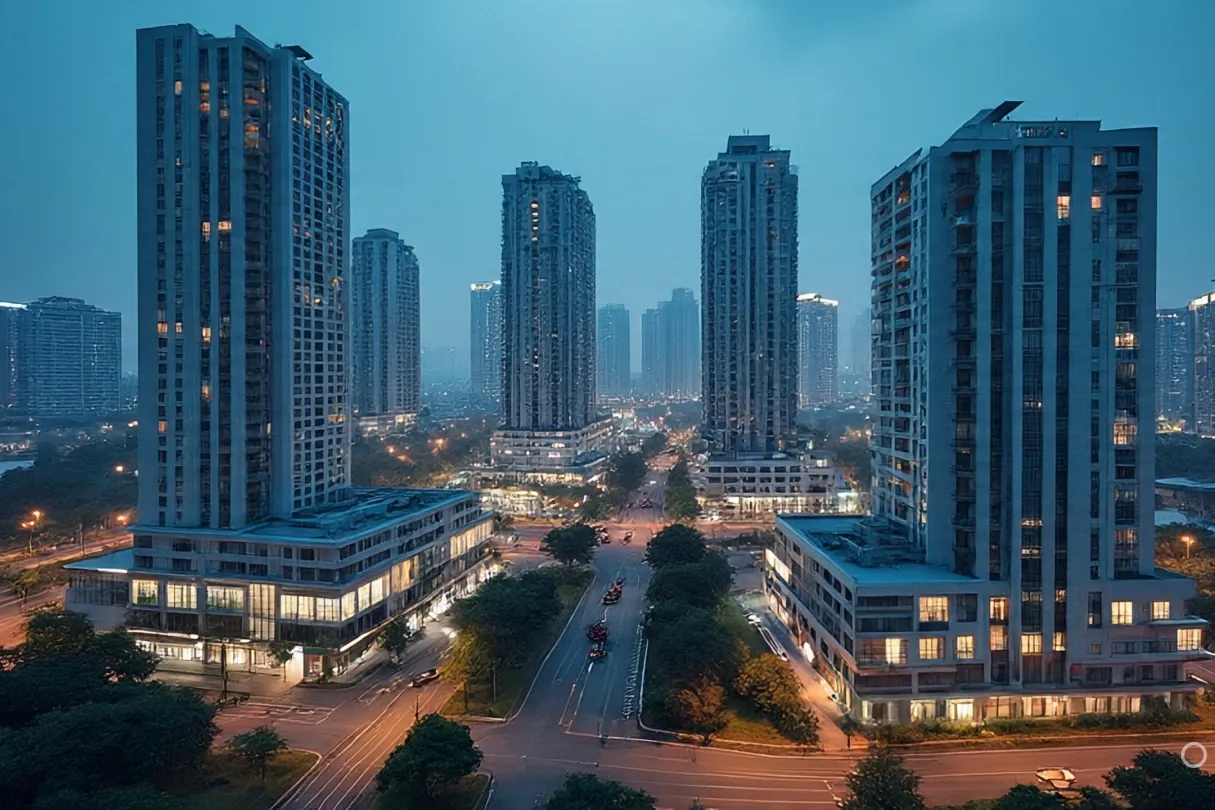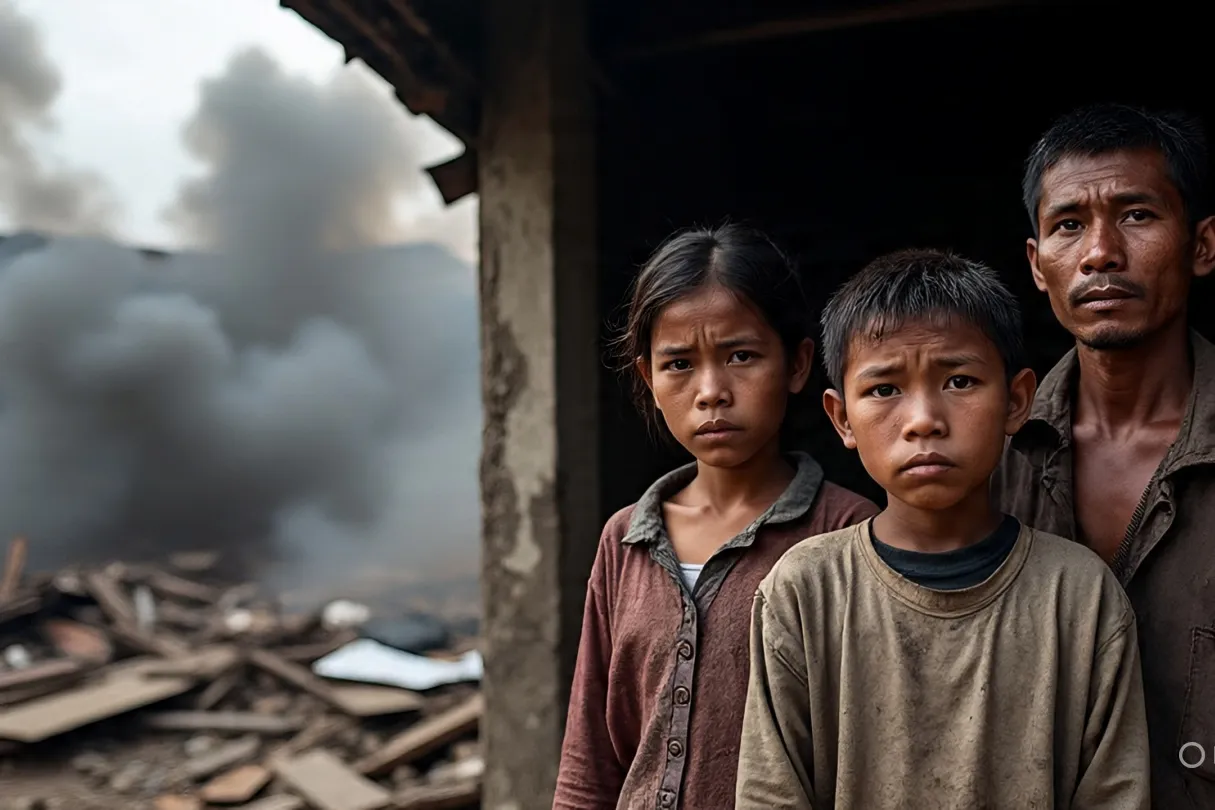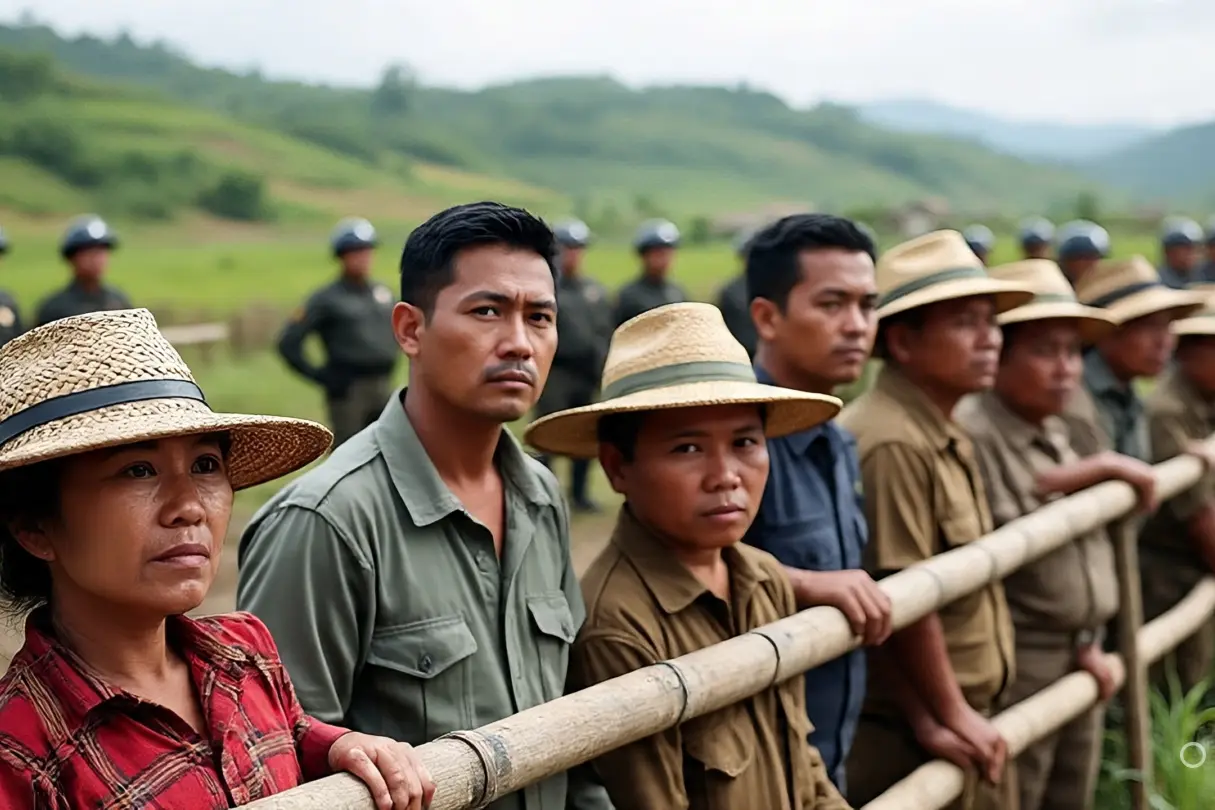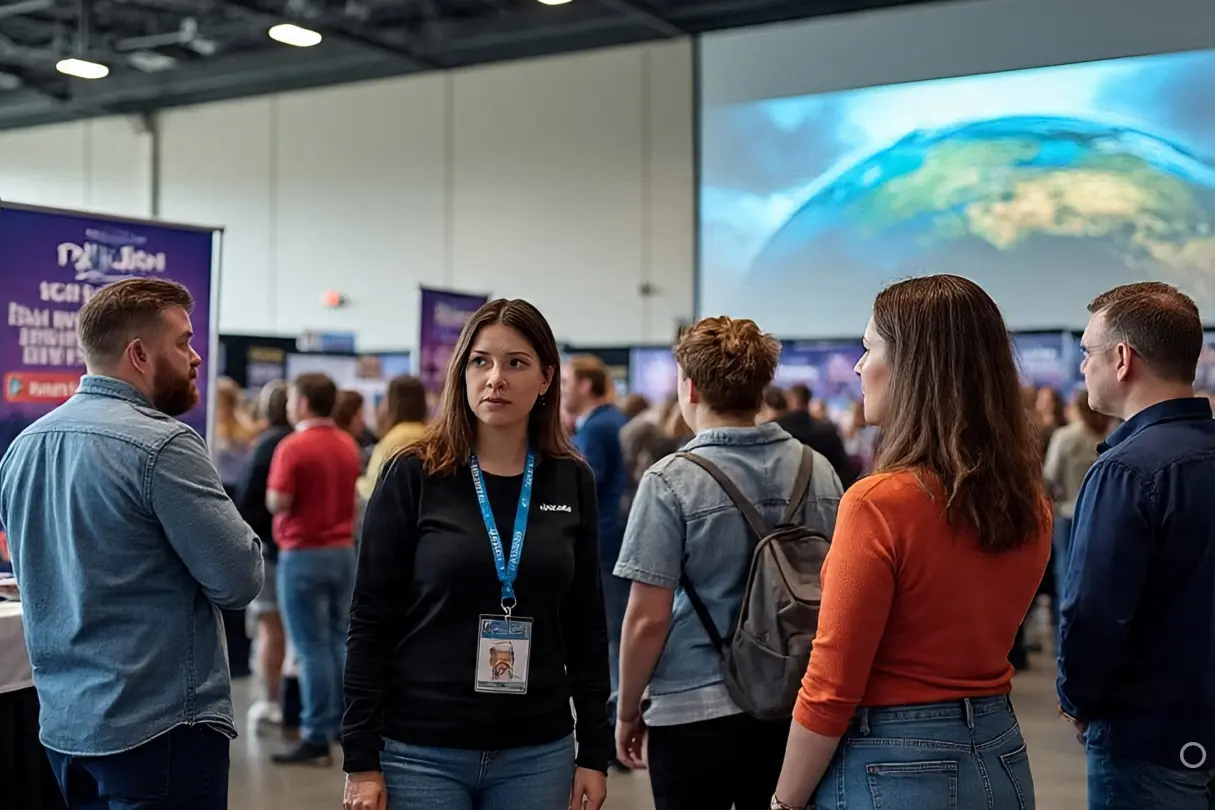In the bustling metropolises of Hanoi and Ho Chi Minh City, a new kind of skyline has emerged. Gleaming, futuristic high-rises tower over the traditional low-rise shops and vibrant street life, their glass exteriors reflecting a vision of a modern, prosperous Vietnam.
Yet, as night falls, a disquieting truth becomes visible. Many of these towers remain eerily dark, their windows a black void against the city’s electric hum. These are Vietnam’s “ghost cities,” sprawling developments of luxury villas and high-end apartments built with audacious speed, yet largely uninhabited. For many, this isn’t just an oddity of urban development; it’s a symptom of something far more sinister.
A persistent and compelling conspiracy theory has taken root: that these empty high-rises are not the result of simple market speculation but are part of a massive, multi-billion dollar money laundering operation. The theory posits that Vietnam’s booming real estate sector has become a primary vehicle for elites and foreign investors, particularly those from China, to funnel illicit funds out of their own countries, clean the money, and park it in tangible, high-value assets.
This narrative, while lacking a definitive smoking gun, taps into deep-seated public anxieties about corruption, capital flight, and the opaque nature of high-level financial networks. To understand if this theory holds any weight, we must look beyond the gleaming facades and delve into the economic realities, political undercurrents, and global financial forces that have shaped Vietnam’s urban landscape.
🏙️ Unpacking the Ghost City Phenomenon
The phenomenon of empty luxury real estate is not unique to Vietnam, but its scale and nature here have fueled intense speculation. The country has been in the midst of a real estate boom for over a decade, driven by strong economic growth and a burgeoning middle class. However, the supply of luxury housing has far outpaced the actual demand from genuine end-users.
Developers, often with strong political connections, have engaged in a race to build bigger and more luxurious projects, frequently securing large loans and land allocations under questionable circumstances.
The result is a striking imbalance. While the demand for affordable housing for ordinary Vietnamese families remains high, new projects consistently focus on the top end of the market. This creates a scenario where a substantial portion of the new supply is bought up by investors—both domestic and foreign—who have no intention of living in the units.
For these investors, the primary purpose is not to find a home but to find a safe haven for their capital. The properties sit empty, their value rising on paper, while the city’s housing needs go unmet. This stark visual contrast between a booming market and an empty city fuels the perception of a market detached from reality, a market driven by forces other than supply and demand.
🇨🇳 Following the Money: Capital Flight from China
A central pillar of the Vietnam ghost cities money laundering theory is the role of capital flight from China. Facing strict capital controls and a government-led anti-corruption campaign, many wealthy Chinese individuals and businesses have sought to move their assets out of the country. Vietnam’s real estate market, with its proximity to China, its stable economic growth, and its relatively lax regulations on foreign investment, has become an increasingly attractive destination.
The process is often described as follows:
- The initial investment: Illicit funds from China are funneled into Vietnam through various channels, often through a complex network of shell companies, intermediaries, and informal financial systems.
- Property acquisition: This money is then used to buy multiple high-end properties, often in cash or through a series of rapid, high-value transactions that are difficult to trace. The focus is on new, premium developments where values are expected to rise.
- Parking the assets: The properties are then left empty. The goal is not to generate rental income but to convert illegal cash into a tangible, appreciating asset that is outside of the Chinese government’s reach.
This cycle, according to the theory, has been enabled by specific Vietnamese policies. Amendments to laws on foreign land ownership and an aggressive push to attract foreign direct investment (FDI) created a perfect storm. While designed to stimulate the economy, these policies inadvertently created loopholes that could be exploited by those seeking to launder money. The lack of stringent checks on the source of funds for high-value real estate transactions further compounded the issue.
🤝 Cronyism, Corruption, and a Lack of Transparency
The suspicion that Vietnam ghost cities money laundering is happening is deeply tied to broader public perceptions of corruption and cronyism. The rapid and often opaque process of granting land use rights to politically connected developers has long been a source of public frustration. Stories of powerful figures acquiring prime land for pennies on the dollar, only to sell it later for massive profits, are common.
This perceived lack of transparency in land allocation and project approvals fuels the belief that the government is complicit in, or at least willfully ignorant of, illicit financial activities. Critics argue that these high-end, uninhabited projects are not a bug of the system, but a feature. They are a way for powerful domestic and foreign players to enrich themselves through a corrupt, symbiotic relationship, with the empty apartments serving as a visible, if not haunting, monument to their ill-gotten gains.
This phenomenon is not without precedent. Similar situations have been observed in China itself, where the construction of entire ghost cities was linked to government officials seeking to boost local GDP and profit from land deals, often without any real demand from the population. In parts of the Middle East, such as Dubai, real estate has also been a favored vehicle for global money laundering, with luxury properties offering anonymity and a high-value store for illicit funds. The parallels between these cases and the situation in Vietnam strengthen the conspiratorial narrative in the eyes of many.
📈 The Counter-Narrative: Speculation, Not Scheme?
While the money laundering theory is compelling, a more conventional explanation points to simple, albeit irrational, market dynamics: real estate speculation. In this view, the ghost cities are a product of a classic speculative bubble, not a clandestine financial network.
Economists and real estate analysts offer a different perspective. They argue that the vast majority of purchases in these luxury developments are made by domestic and foreign investors who are betting on future appreciation. The motivation is not necessarily to launder money but to make a quick profit. They buy properties off-plan at a lower price and hope to sell them for a significant gain before construction is even finished, or soon after. This results in properties that are owned, but not lived in.
The factors supporting this view include:
- A mismatch between supply and demand: Developers have overbuilt for a niche market of wealthy buyers, while ignoring the needs of the broader population.
- Limited investment options: For many wealthy Vietnamese, real estate is seen as a safer and more stable investment than stocks or bonds, which drives up demand in the luxury sector.
- The “Veblen effect”: The high prices of these properties are themselves a selling point, signaling status and exclusivity to a certain class of buyers.
From this perspective, the empty towers are a sign of a flawed market, not a criminal one. The high number of vacancies is a direct result of developers overestimating demand and investors over-speculating, leading to a surplus of luxury housing.
⚖️ Evaluating the Evidence: A Blurry Line
So, which theory holds up? The truth likely lies somewhere in the middle. While there is no definitive public evidence of a massive, state-orchestrated money laundering scheme, it is equally naive to believe that illicit money has played no role in the boom. The line between aggressive speculation and money laundering is often blurry, and the same policies that enable one can facilitate the other.
The reality is that Vietnam’s rapid economic growth, combined with its relatively lax financial regulations and a real estate market hungry for capital, created an ideal environment for both legitimate investors and those with more nefarious intentions. The ghost cities serve as a stark visual reminder of the consequences of this environment. They are a monument to the risks of unchecked speculation and a symbol of a market that, for a time, became disconnected from the needs of the people it was built to serve.
The Vietnam ghost cities money laundering theory, even if it is not entirely factually true, is incredibly powerful because it gives a name to a very real problem. It’s a narrative that captures the public’s frustration with economic inequality, corruption, and the feeling that the country’s rapid development is benefiting a select few at the expense of everyone else. The true story of Vietnam’s ghost towers may not be a simple tale of criminal intent, but it is certainly a cautionary one about the dangers of a market where money flows faster than logic and where real estate becomes a game of chess played by the elite, while the rest of the population watches from below, forever in the shadow of the empty towers.




